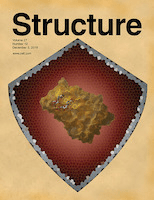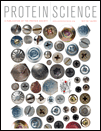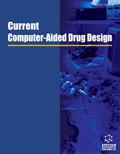
JOURNAL OF BIOMOLECULAR STRUCTURE & DYNAMICS
Scope & Guideline
Exploring the Intricacies of Biomolecular Dynamics
Introduction
Aims and Scopes
- Biomolecular Dynamics and Interactions:
Research primarily revolves around the dynamic behavior and interactions of biomolecules, including proteins, nucleic acids, and small molecules, to understand their functional mechanisms. - Computational Drug Discovery:
The journal showcases innovative computational techniques for drug discovery, including molecular docking, molecular dynamics simulations, and virtual screening, to identify potential therapeutic agents. - Natural Products and Phytochemicals:
There is a strong emphasis on the exploration of natural products and phytochemicals as potential inhibitors or therapeutic agents against various diseases, particularly through computational methods. - Multi-target Approaches:
Research often involves multi-target strategies to enhance therapeutic efficacy, focusing on complex diseases like cancer and infectious diseases, utilizing systems biology and network pharmacology. - Vaccine Development and Immunoinformatics:
The journal includes studies on vaccine design and development using computational approaches, particularly in response to emerging viral infections like COVID-19.
Trending and Emerging
- AI and Machine Learning in Drug Discovery:
The integration of artificial intelligence and machine learning techniques in drug discovery is on the rise, showcasing a trend towards data-driven approaches that enhance predictive modeling and screening efficiency. - COVID-19 Related Research:
Research targeting SARS-CoV-2, including the development of vaccines and inhibitors, remains a significant focus, reflecting the ongoing global health impact of the pandemic. - Systems Biology and Network Pharmacology:
There is an increasing trend towards employing systems biology and network pharmacology approaches to understand complex interactions within biological systems and to identify novel therapeutic targets. - Phytochemical Research and Natural Products:
The exploration of phytochemicals and their potential therapeutic applications is gaining momentum, with more studies focusing on their molecular interactions and efficacy as drug candidates. - Protein-Protein Interaction Studies:
Research focusing on protein-protein interactions, particularly in the context of disease mechanisms and therapeutic targets, is emerging as a prominent theme, indicating a shift towards understanding molecular networks.
Declining or Waning
- Traditional Medicinal Chemistry:
There appears to be a waning interest in classical medicinal chemistry approaches focused solely on small molecule design, as the field increasingly shifts towards integrating computational and biological methods. - Single Target Drug Discovery:
The focus on single-target drug discovery is declining in favor of multi-target approaches that consider the complexity of biological systems and disease mechanisms. - Experimental-Only Studies:
Research papers that rely solely on experimental methods without computational backing are becoming less common, reflecting a trend towards more integrated methodologies. - Basic Biochemical Studies:
There is a noticeable decrease in the publication of basic biochemical studies that do not incorporate computational analysis, as the field evolves to prioritize interdisciplinary approaches.
Similar Journals

STRUCTURE
Advancing the frontiers of structural and molecular biology.STRUCTURE is a premier academic journal published by CELL PRESS, dedicated to advancing the field of structural biology and molecular biology since its inception in 1993. With an impressive reputation, it is recognized as a Q1 journal in both Molecular Biology and Structural Biology categories, reflecting its high impact within the academic community. The journal holds a significant position in Scopus rankings, placing 10th among 49 in Structural Biology and 100th among 410 in Molecular Biology, marking it as a key resource with a strong influence on ongoing research. Researchers and professionals alike will find STRUCTURE an invaluable platform for disseminating cutting-edge findings related to protein structure, dynamics, and interactions, fostering insights that can lead to groundbreaking applications in medicine and biotechnology. Although the journal follows a traditional subscription model, it continues to attract a diverse array of submissions, ensuring a vibrant exchange of knowledge in the ever-evolving landscape of structural and molecular biology. Access to its content can enhance the understanding of intricate biological mechanisms, making it essential reading for experts, students, and anyone passionate about the molecular underpinnings of life.

BioImpacts
Elevating global discourse in medical and pharmaceutical advancements.BioImpacts, an esteemed journal published by Tabriz University of Medical Sciences & Health Services, is a prominent platform dedicated to advancing the fields of Biochemistry, Genetics, Molecular Biology, Medicine, and Pharmaceutical Science. Established in 2011, this Open Access journal ensures that vital research findings are freely accessible to the global academic community. With an impressive presence in the Scopus database, BioImpacts currently holds a Q2 quartile ranking in its respective categories, reflecting its contribution to scientific discourse and its importance as a critical resource for researchers and practitioners alike. The journal's dynamic scope encompasses a wide range of topics, highlighting innovative research that addresses contemporary challenges in health and disease. Operating out of Tabriz, Iran, BioImpacts is committed to fostering interdisciplinary collaboration and knowledge dissemination through their dedicated publication efforts, which span from 2011 to 2024. Researchers, professionals, and students are encouraged to explore the rich content and cutting-edge studies presented in this journal, making it an indispensable resource in the scientific community.

Chemical Biology Letters
Transforming Insights into Medical BreakthroughsChemical Biology Letters is a prominent academic journal dedicated to the evolving field of biochemistry and its applications in medical and clinical contexts. Published by ScienceIn Publications, this journal serves as a vital platform for researchers, professionals, and students alike, showcasing cutting-edge findings and innovations that drive forward our understanding of chemical interactions in biological systems. With its scope ranging from molecular biology to clinical biochemistry, Chemical Biology Letters is committed to advancing knowledge and fostering collaboration within the scientific community. Recognized for its quality, the journal is categorized in Q4 for Biochemistry and Molecular Biology fields, while achieving notably higher ranks in Medical Biochemistry, reflecting its significant contributions to the discipline. Aiming to remain accessible to a diverse audience, the journal is published in open access format, inviting researchers worldwide to explore and share invaluable insights. Established in 2014, it continues to grow in impact and relevance, paving the way for advancements in both theoretical and applied research within the realm of chemical biology.

CURRENT MEDICINAL CHEMISTRY
Unveiling the Science Behind Effective Therapies.Current Medicinal Chemistry is a leading journal published by Bentham Science Publishers Ltd, known for its rigorous focus on the multifaceted realm of medicinal chemistry. With an ISSN of 0929-8673 and E-ISSN 1875-533X, the journal plays a crucial role in disseminating high-quality research findings that bridge the gap between chemistry and health sciences. Operating from Sharjah, United Arab Emirates, it has been a prominent scholarly resource since its inception in 1994, and is expected to continue until 2024. Current Medicinal Chemistry has earned its place in the academic community with an impressive impact factor and categorization in Q1 and Q2 quartiles across various disciplines, including Organic Chemistry, Biochemistry, Drug Discovery, and Pharmacology, highlighting its substantial contribution to these fields. Notably, it ranks 24th in Organic Chemistry and is within the 88th percentile, underscoring its appeal to researchers, professionals, and students alike who are keen on exploring cutting-edge advancements in drug design and development. Although it is not an open-access journal, it provides vital content that informs and inspires innovation in medicinal chemistry, appealing to a global audience committed to enhancing human health through scientific discovery.

Biomolecules
Unlocking the secrets of life through biomolecular research.Biomolecules is a prestigious, peer-reviewed journal published by MDPI that has been dedicated to advancing the field of biochemical research since its launch in 2011. With an impressive impact factor positioning it in Q1 for Biochemistry and Q2 for Molecular Biology as of 2023, this journal serves as a vital platform for disseminating high-quality research findings related to biological macromolecules, including proteins, nucleic acids, and carbohydrates. Operating as an Open Access journal, it ensures that vital research is accessible to all, furthering knowledge dissemination and collaboration within the scientific community. Located in Basel, Switzerland, the journal has established a significant presence in major academic databases, holding commendable Scopus rankings in both Biochemistry and Molecular Biology. Researchers, professionals, and students will find Biomolecules an invaluable resource for cutting-edge research, reviews, and insights in the rapidly evolving domains of biochemistry and molecular biology.

INDIAN JOURNAL OF BIOCHEMISTRY & BIOPHYSICS
Unlocking the secrets of life at the molecular level.INDIAN JOURNAL OF BIOCHEMISTRY & BIOPHYSICS is a well-regarded academic journal that serves as a vital platform for researchers in the fields of biochemistry and biophysics. Published by the NATL INST SCIENCE COMMUNICATION-NISCAIR since its inception in 1972, this Open Access journal has committed itself to disseminating high-quality research and advancements in these dynamic fields, allowing readers worldwide to access vital findings since 2009. The journal maintains a robust presence in the academic landscape, achieving noteworthy rankings in 2023, placing it in the Q4 category for Biochemistry and Q3 for both Biophysics and miscellaneous Medicine, alongside its respectable Scopus rankings. With an emphasis on original research articles, reviews, and educational contributions, the INDIAN JOURNAL OF BIOCHEMISTRY & BIOPHYSICS plays an essential role in fostering scientific dialogue and collaboration among professionals and students alike. For scholars seeking to stay at the forefront of biochemistry and biophysics research, this journal is an indispensable resource that fosters knowledge exchange and elevates the field on both a national and international scale.

PROTEIN SCIENCE
Unraveling the Mysteries of Protein Structure and FunctionPROTEIN SCIENCE, published by Wiley, is a premier journal dedicated to the field of biochemistry, molecular biology, and medicine, boasting an impressive impact factor that reflects its influence and importance within the academic community. Established in 1992, the journal has continuously provided a platform for high-quality research, with a current classification in the top quartile (Q1) for its critical contributions to the understanding of protein structure and function, as well as its applications in health and disease. With a Scopus ranking placing it in the 91st percentile among its peers, PROTEIN SCIENCE publishes cutting-edge studies and reviews that are essential for researchers, professionals, and students seeking to advance their knowledge in protein research. Although it does not currently offer open access options, the journal remains dedicated to disseminating vital findings that support the ongoing advancements in molecular biology and biochemistry. Researchers can count on PROTEIN SCIENCE for consistently rigorous peer-reviewed content that fosters meaningful dialog and innovation in the life sciences.

JOURNAL OF MOLECULAR RECOGNITION
Cultivating a Deeper Understanding of Molecular DynamicsJOURNAL OF MOLECULAR RECOGNITION, published by Wiley, is an esteemed academic journal that has been at the forefront of molecular biology and structural biology research since its inception in 1988. With its ISSN 0952-3499 and E-ISSN 1099-1352, this journal serves as a vital platform for disseminating innovative studies and findings in the realms of biochemical interactions and molecular structure elucidation. Although currently positioned in Quartile 4 of both molecular and structural biology categories based on 2023 metrics, the journal is dedicated to advancing knowledge in quantitative and qualitative molecular recognition processes. Researchers, professionals, and students alike will find that this journal is instrumental in keeping abreast of cutting-edge developments in the field, even as it continues to build its impact and reputation within the dynamic research landscape. Located in the United Kingdom, it is committed to promoting a diverse range of studies that drive forward the understanding of molecular interaction phenomena, thus empowering its readership to contribute effectively to the field.

AIMS Biophysics
Pioneering discoveries in biophysics and beyond.AIMS Biophysics, published by the American Institute of Mathematical Sciences (AIMS), is an esteemed open-access journal dedicated to advancing the fields of biophysics, biochemistry, molecular biology, and structural biology. Launched in 2014, this journal provides a platform for researchers and professionals to disseminate high-quality research findings that contribute to the understanding of complex biological systems at the molecular level. With an ISSN of 2377-9098, AIMS Biophysics is indexed in Scopus, where it ranks in the fourth quartile across several categories, reflecting its commitment to addressing important issues within the scientific community. The journal aims to foster interdisciplinary collaboration and innovation through the publication of original research, reviews, and methodologies that advance the field. The open-access model ensures that cutting-edge research is freely available, promoting global access to scientific knowledge and enhancing visibility for authors. Nestled in the vibrant scientific landscape of the United States, AIMS Biophysics is poised to impact the evolving discourse in biophysics and related areas as it continues through its convergence period from 2014 to 2024.

Current Computer-Aided Drug Design
Fostering Collaboration for Breakthroughs in Drug DiscoveryCurrent Computer-Aided Drug Design, published by BENTHAM SCIENCE PUBL LTD, is a pivotal journal dedicated to the integration of computer-aided methodologies within the drug design process. With its ISSN 1573-4099 and E-ISSN 1875-6697, this journal serves as a vital resource for researchers, professionals, and students interested in advancing the fields of pharmacology and molecular medicine. Operating under a framework that spans from 2006 to 2024, it aims to foster innovative approaches and discussions surrounding drug design strategies, computational techniques, and the therapeutic potential of novel compounds. Although it currently holds a Q4 rating in Drug Discovery and Molecular Medicine as well as a Q3 in Medicine (miscellaneous) within the 2023 category quartiles, the journal continues to enhance its visibility and relevance in the academic community. Its Scopus rankings reflect its commitment to quality research, positioning it in the context of drug discovery and molecular studies. As the field of drug design evolves, Current Computer-Aided Drug Design remains an essential platform for disseminating cutting-edge findings and facilitating collaboration among specialists aiming for significant advancements in drug development.